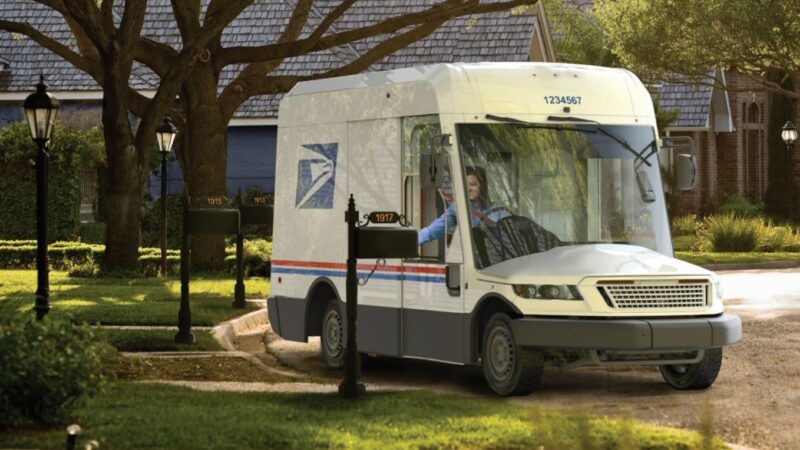Environmentalists Are Blocking the Post Office From Replacing Busted 30-Year-Old Mail Trucks
Congressional Democrats are insisting on expensive green tech, even though USPS is in desperate financial condition.

(USPS)
The United States Postal Service (USPS) wants to add 165,000 new trucks to its fleet, which hasn't been upgraded in over 30 years. The agency says it must upgrade its trucks due to their "inefficient gasoline engines" and lack of "modern safety features." But now congressional Democrats hope to stall the agency's plan because it won't add enough electric vehicles, even though forcing the USPS to purchase an entirely "green" fleet would cost the financially troubled agency billions more than its proposed plan.
As required by the National Environmental Policy Act (NEPA), the USPS submitted its environmental impact statement for Next Generation Delivery Vehicle acquisitions in January 2021. The agency plans to purchase 50,000 to 165,000 new trucks over the next 10 years, of which 5,000 would be battery electric vehicles. This means that 10 percent of the new USPS vehicles will be emissions-free and the remaining 90 percent will be gas-powered.
The Environmental Protection Agency (EPA) as well as the White House Council on Environmental Quality quickly issued complaints, claiming that the USPS' statement did not fully comply with NEPA and that the agency must rely less on gas-powered vehicles.
In its letter to Jennifer Beiro-Réveillé, senior director of environmental affairs and corporate sustainability at the USPS, the EPA complained that the impact statement did not "disclose essential information underlying the key analysis of Total Cost of Ownership (TCO), underestimates greenhouse gas (GHG) emissions, fails to consider more environmentally protective feasible alternatives, and inadequately considers impacts on communities with environmental justice concerns." The White House said the purchase would conflict with President Joe Biden's effort to ensure that federal agencies achieve 100 percent zero-emission vehicle acquisitions by 2035. (The USPS is an independent agency and doesn't fall under the jurisdiction of Biden's zero-emissions executive order.)
In response, USPS said it would move forward with its proposal and that there is no legal basis to deny it. "Our commitment to an electric fleet remains ambitious given the pressing vehicle and safety needs of our aging fleet as well as our fragile financial condition," said Postmaster General Louis DeJoy in a press release. "But the process needs to keep moving forward."
Meanwhile, Rep. Gerry Connolly (D–Va.) has introduced legislation to block any USPS vehicle purchases unless 75 percent of the trucks are electric or emissions-free. And last week, a group of House Democrats penned a letter calling for an investigation into the purchase over its environmental impact. According to a spokeswoman, the letter has been received by the inspector general's office and is being carefully reviewed.
The cost of the purchase would be $6 billion over 10 years. Electrifying the fleet, however, would cost the USPS $2.3 billion more over 20 years due to the cost of manufacturing lithium-battery vehicles, as well as the 2021 average cost of kilowatt-hours ($0.11/kWh) versus gas ($2.71/gallon).
The purchase is part of DeJoy's 10-year Delivering for America plan to make the USPS more efficient and financially viable. Considering the agency's longtime financial unsustainability, it should be prioritizing its fiscal performance over its environmental impacts right now. Forcing the USPS to buy fewer trucks than it needs or necessitating another federal bailout further jeopardizes the agency's ability to serve Americans.
